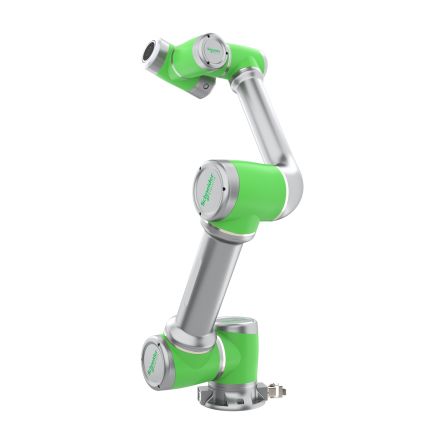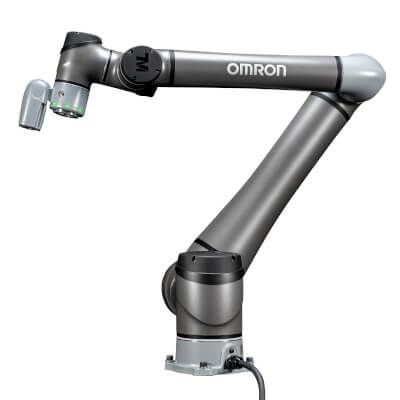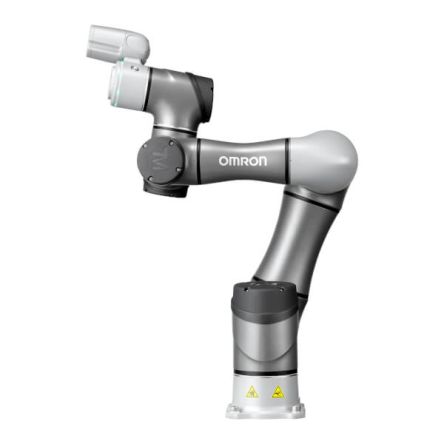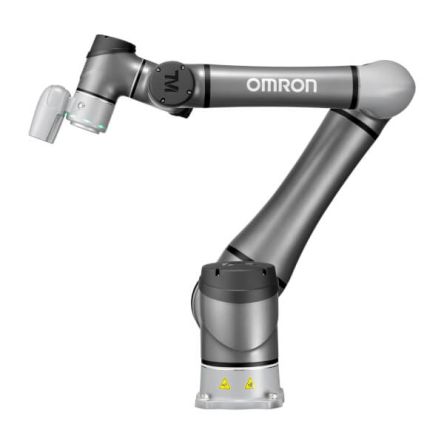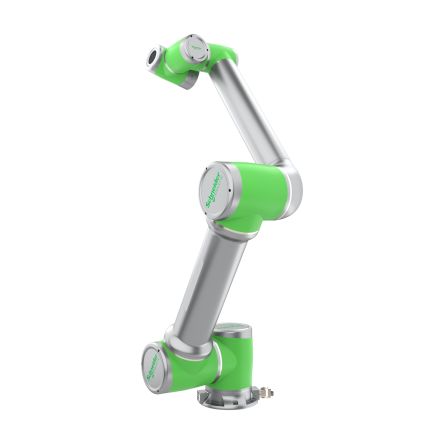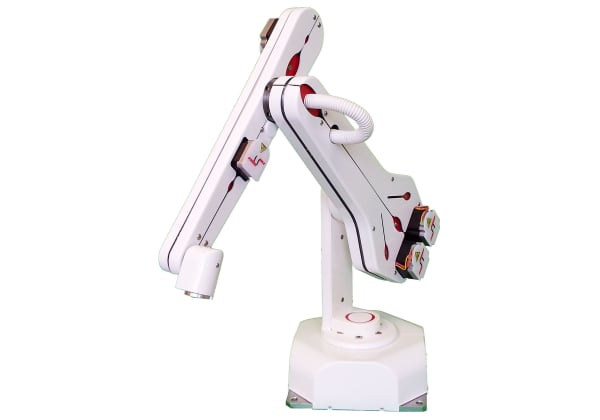- Published 17 Nov 2025
- Last Modified 17 Nov 2025
- 6 min
The Automation Gap: Why SMEs Struggle with Robotics
Automation for your small business is now within reach. Discover how modular robotics and simple programming solutions can make automation affordable and accessible.

Has automation felt out of reach for scaling your small business due to the costs? Those barriers are starting to be broken down thanks to innovations like modular robotics and no-code and low-code robotics. This guide will explain how those technologies can solve the challenges small- and medium-sized enterprises (SMEs) face in implementing automation.
Automation has long been mainly the domain of large manufacturers, all the way back to its introduction in the automotive industry. Companies with large facilities and large budgets have been able to work through the challenges and costs that have typically come with automation and robotics, namely:
- Very expensive equipment to purchase
- Highly specialised staff for programming, operating, and maintaining robots
- Inflexibility in altering a robot’s task or where in the manufacturing chain it’s deployed
- Challenges integrating with existing systems
- Potentially daunting safety concerns and the additional safety procedures required
This all necessitates high-volume, low-mix production to justify these costs, which SMEs often aren’t suited for; they thrive in the agility of low-volume, high-mix production so they can nimbly get new, small-order products to customers. Historically, this has meant that only larger companies can seize the benefits of automation and robotics, letting them scale even further ahead.

The Solution: Modular and Accessible Automation
Industry 4.0 has seen remarkable improvements to robotics, lowering their footprint and making them more affordable and accessible - similar to the increased accessibility of 3D printing. Modular robotics allows quick, plug-and-play implementation and simple reconfiguration to new tasks. Meanwhile, no-code and low-code robotics make robots more widely accessible to users by greatly reducing the need for programming knowledge, allowing staff to quickly teach robots to produce new products.
Read on to learn about how the future of robotics is bright for SMEs looking to scale up and compete in our high-tech, fast-paced world.
The Flexibility of Modular Robot Systems
Modular robotics are industrial robots that have minimal installation footprints and high configurability while being easy to use. They help enable SME automation through the following benefits:
- Low purchase costs: Since they’re smaller and produced in greater numbers, modular robotics requires a relatively low initial financial investment compared to the classic large, monolithic robotic arms of larger manufacturers
- Quick installation: The small size and low weight of modular robotics let them easily fit alongside existing production lines and be quickly set up for work
- Interoperability: Their physical simplicity also comes with versatility in their programming and data connections. Modular robotics is designed to plug-and-play with existing infrastructure and other robots
- Ease of use: Modular robotics is also simple to learn to use, which minimises expensive training. They can be quickly programmed to learn new tasks and don’t require much coding. They are also great examples of cobots - industrial robots that work alongside human operators to enhance their work
- Flexibility and configurability: Modular robotics’ accessories (grippers, cutters, etc) can be easily reconfigured for new tasks. So, based on a production line’s need, a robot performing welding could be quickly moved, reconfigured, and reprogrammed to perform a measuring task instead. This configurability also helps enable rapid prototyping, often working alongside 3D printing
- Scalability: Automation is a big step for an SME to take, but this can start with testing a single modular robot performing a task on a small scale. That single robot can even be tested in multiple production areas to further prove its worth. After that, more of the same small robots can be gradually eased into multiple operations
- Simpler maintenance: Given these robots’ higher production volumes, spare parts are more readily available. Maintenance is also simpler, given the simplicity and smaller sizes of the devices themselves. Redundancy is even possible since it’s practical to swap in a replacement robot for one entering service, minimising downtime
- Industry 4.0 compatibility: These new devices are also designed with the latest industrial connectivity in mind. Modular robotics can feature IIoT connections, edge computing, and AI-assisted programming
Introduction to Low-Code/No-Code Robotics
No-code and low-code robotics are making it increasingly simple for people to use industrial robots, regardless of their background. They use more intuitive interfaces featuring drag-and-drop building blocks of tasks rather than typed code to tell robots what to do (while the code still happens behind the scenes). These systems can also feature tools like process modelling to visualise how the robot’s work fits with the company’s overall workflow. Low-code robotics does all this while still allowing refinement of the program using manual coding, while no-code robotics gives no option for that and manages all functions through a graphical user interface.
Here are some differences between the two to indicate how they change what SME automation applications each is suited for:
- Users: Low-code robotics is for users with some programming ability, while users with none can handle no-code. Low-code allows control of the ‘last mile’ of programming: quickly mapping out the basics with visual tools and then refining the code manually to the user’s liking
- Time to deploy: Low-code takes more time and training to implement (though still far less than with standard automation) since it’s more customisable. No-code is more plug-and-play and requires less testing since there’s no hard-coding to debug
- Upgrades and updates: The coding available in low-code allows users to adapt and scale robotic systems to new functions and connections with other systems, though those need to be re-tested whenever the robot receives software updates. No-code has low customisability and scalability, and fewer use cases, but software updates go more smoothly and cleanly
- Shadow IT: No-code robotics can conceivably operate under the IT department’s noses, risking poor security and infrastructure duplication. Low-code has less risk of this since it can link to other systems more easily
Which one is right for you? Consider your end-goal of the automation, the users and their training, how customisable and scalable the application needs to be, how quickly you need the robotics implemented, what systems the robot needs to integrate with, and the security concerns. No-code and low-code robotics are both great tools for achieving SME automation.
Building Your First Automated System
Once you’re ready to adopt modular and low-code robotics, how should you go about implementing them?
Start by identifying what specific shortcoming you’re trying to solve. Robots won’t automatically make you win. Are you trying to automate a task that is repetitive, time-consuming, or highly intricate (or all three), and have you identified that task as a true constraint on your company’s output?
From there, select a modular robot that can perform this task. Consider the costs of its full lifecycle: initial purchase, training required, coding involved, energy demands, configurability and scalability, parts availability and costs, the software updates process, safety concerns, etc.
Then, try out the robot on a small scale. Test how successfully it performs and how its speed compares to your current operations. Gather feedback from its users and those downstream in the workflow (and your customers) to see how well the robot is really fitting in. You can even try out a single robot on a few different tasks to further test how it performs in different scenarios.
If this trial is a success, scale up the robot’s involvement in your operations and add more robots incrementally. Continue to monitor their performance and how it’s improving your output.
Remember to consider how humans will remain involved. What monitoring and manual intervention will be required? How do safety procedures need to change? Strive to enhance humans’ jobs rather than eliminate them.
After all that, reap the benefits of SME automation and become an exemplar of Industry 4.0! Browse our range of robotic arms to get started on implementing automation today.
